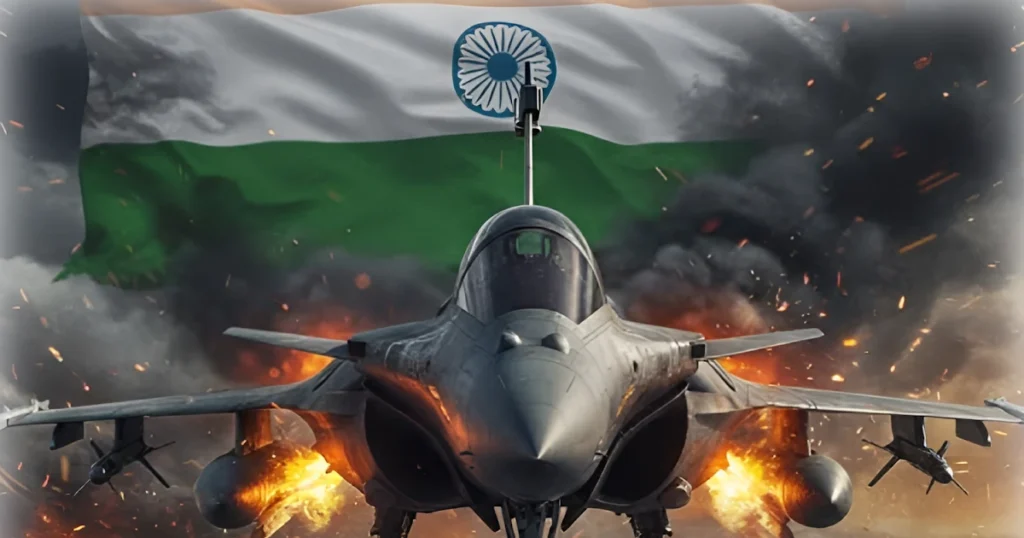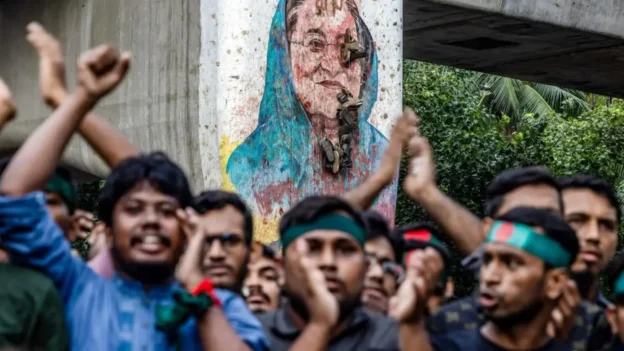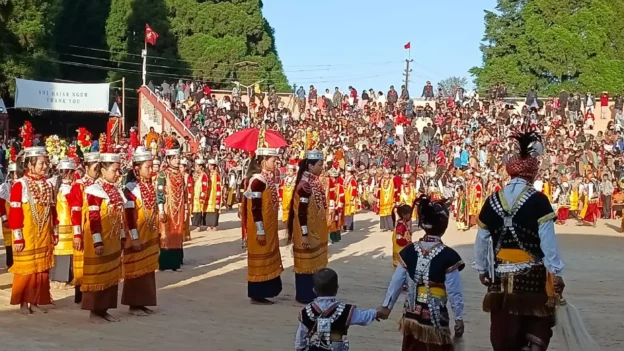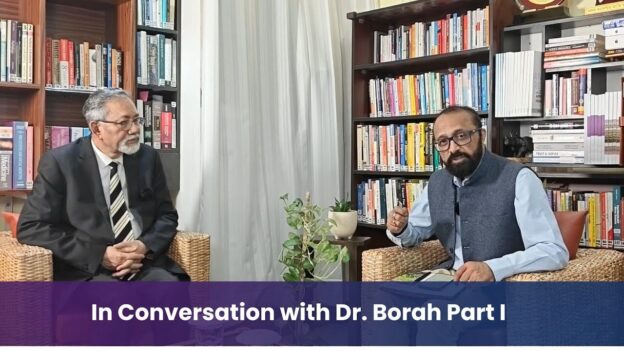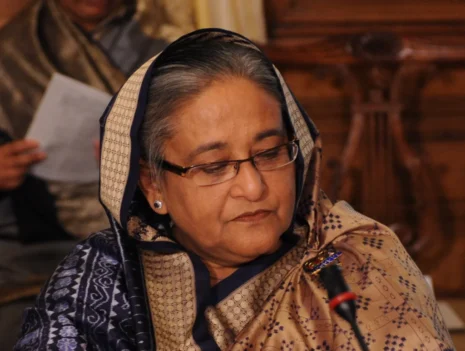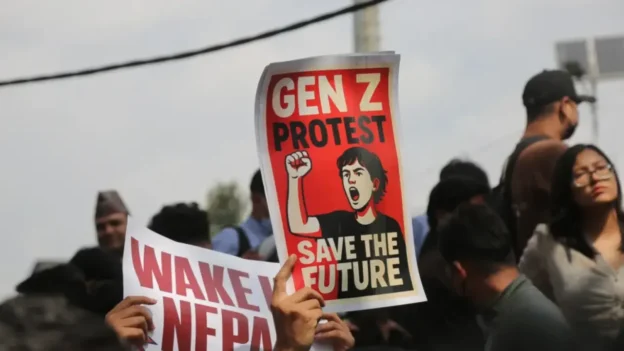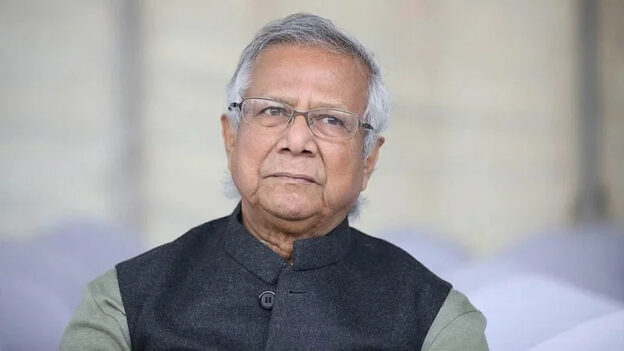The India-Pakistan conflict that transpired in May 2025, characterized by a brief yet intense confrontation, concluded on May 10 with a ceasefire. The war was instigated by the killing of innocent civilians and tourists at Pahalgam on April 22 in a desperate bid by a section of the Pakistani military leadership, who used proxies such as the Lashkar-e-Taiba and Jaish-e-Mohammed, to rekindle the Kashmir issue. India’s well-thought-out response, Operation Sindoor, which aimed at terrorist camps not just in Kashmir but also in heartland Punjab, such as Bahawalpur, created a cycle of tit-for-tat responses that ultimately ended after Pakistan’s final gamble, Operation Bunyan-un-Marsoos, failed and US President Donald Trump intervened and a ceasefire was declared at 17:00 hours on 10th May 2025.
Both nations declared victory, asserting their triumphs while highlighting their individual accomplishments. The Indian government claimed to have obliterated nine terrorist installations and killed prominent figures of those organizations, including Yusuf Azhar, a member of Jaish-e-Mohammed. Conversely, Pakistan asserted that its J-10C aircraft had downed five Indian Rafale fighters (later scaled down to one), among other claims. Nonetheless, it is evident that both parties exaggerated their achievements and shortcomings, participating in an information warfare where the truth was the first casualty. The world media, usually considered an impartial arbitrator, played a concerning role, and I argue here that their viewpoint was shaped by the arms industry, valued in the trillions of dollars. Hence the narrative—in this case, the shooting of the Rafale jet—was set to serve the interest of this market and not the truth, as one might assume.
The conflict and the Rafale claim
India’s assaults on May 7 and 8 resulted in verified damage to Pakistan’s radar systems and a drone launchpad, specifically targeting military installations and equipment linked to terrorist organizations. Jammu and Punjab encountered minor disruptions due to Pakistan’s drone and missile assaults; nevertheless, India’s air defense systems, managed by kinetic weapons like the upgraded Soviet-era ZU 23mm, L-70 Schilka (Anti aircraft Guns used against Drones) , Russian S-400 Triumf (Long range Surface to Air Missile/LRSAM)), Indo-Israeli Barak 8 (Medium range Surface to Air Missile/MRSAMS) , Israeli Spyder(Short Range Surface to Air Missile systems SRSAMs), and indigenously developed Akash (MRSAMS) , were largely effective in neutralizing these threats. Nonetheless, the more interesting battle happened in the domain of the news channels and social media. The claim that Pakistan’s Chinese-manufactured J-10C fighters destroyed five Rafales, a MiG-29, and a Su-30 garnered global attention. India refuted the authenticity of fabricated crash pictures, including one repurposed from a 2021 MiG-21 incident, and declined to recognize any casualties.
International media and the arms industry
What is my opinion? A hit is deemed to have occurred only if the film from the opposing side corroborates it. For a jet loss to be deemed credible, evidence that endures over several days, such as wreckage, pilot accounts, or operational deficiencies, is necessary. Notwithstanding the absence of cockpit footage or radar data, Pakistan’s Rafale narrative rapidly diminished. Instead, there were merely indistinct debris films from Bathinda that specialists could not associate with them. The assertion, being recent and lacking supporting facts, constitutes a propaganda tactic aimed at preserving credibility following India’s deep strikes.
This, however, was expected of the Pakistani media; they needed both to assert that they had struck back for a local audience and for the Chinese, who supplied their jets. What was disturbing, however, was the involvement of global media in this situation generated numerous cautionary signals. Multiple news companies, such as CNN and Reuters, have quoted French and American sources to assert that a solitary Rafale may have been hit, so lending some legitimacy to Pakistan’s version. The BBC authenticated the video of the wreckage, although it did not verify that it was debris from the Rafale.
Superficially, it seems like this is being conveyed in an impartial manner, but if probed deeper, then the real interests come out. The arms industry’s influence, a trillion-dollar enterprise with interests in worldwide military markets, becomes apparent upon closer examination. In areas including India, the Middle East, and Southeast Asia, the Rafale, a 4.5-generation French fighter, directly competes with the United States’ F-35 and the United Kingdom’s Eurofighter Typhoon. A market upheaval has transpired due to a rumor indicating that Chinese J-10C fighters, equipped with PL-15 missiles, have the capacity to down a Rafale.
Consider it from an American viewpoint. The United States has long been urging India to acquire the F-35, a stealth aircraft purported to surpass the Rafale. American defense firms, including Lockheed Martin, express dissatisfaction with India’s acquisition of 36 Rafale fighter jets from France. Given that Pakistan’s J-10Cs are Chinese exports, a report indicating that Rafales are vulnerable to Chinese aircraft may prompt India and other markets where the Rafale are in contention with the F-35 to acquire the latter by presenting it as a safer alternative.
Sources in the United States supplying Reuters with information regarding a Rafale loss may also lack objectivity, since they are engaged in a competitive effort to sway India’s $20 billion fighter market and other such markets. These disclosures are dubious due to the absence of concrete evidence, such as satellite imagery or a study of the crash site. What is the source of the imagery from the Pentagon in the case of a Rafale being shot down? The silence provides substantial intensity.
Media organizations in the United Kingdom, including the BBC and SKY, possess their unique complexities. The competition for several global tenders is also between the Rafale and the Eurofighter Typhoon, the latter being backed by the United Kingdom. The Rafale’s reputation may suffer, even if unsubstantiated, perhaps granting the Typhoon a competitive edge in markets such as Qatar or Indonesia. The cautious reporting of BBC Verify, which confirms wreckage but does not establish connections to Rafale, appears to be a safeguard, as it sustains the narrative without making a definitive assertion. There is no conspiracy involved; instead, the emphasis is on incentives. Arms sales are the primary catalyst for economies, and media organizations, reliant on access to Western defense resources, often emphasize narratives that advance those interests. The potential of the J-10C downing a Rafale would pose a significant public relations dilemma for Dassault Aviation in France; hence, it is unsurprising that Western media refrained from promptly refuting Pakistan’s claims.
Did anyone shoot the Rafale…? Who benefits?
X tweets from both factions exacerbated the information conflict, which proliferated across social media sites. Pro-India commentators condemned the absence of evidence, while pro-Pakistan figures hailed the assertion and attributed the “Rafale kill” to the J-10c and JF-17. The lack of corroborated evidence, such as Indian footage of a downed J-10C or Pakistani documentation of a Rafale crash, obscured the veracity of the situation. This echo chamber merely intensified claims that were already exaggerated. In the lack of validation from the opposite party, my assertion stands: it is merely noise. In contrast to the 2019 MiG-21 shootdown, where Pakistan presented irrefutable evidence, the Rafale allegation dissipated after a few days. The Rafale assertion lacked durability, a crucial requisite, since if it was an actual kill, the Chengdu Aviation would have shouted from the rooftops about it. A mere rumor of this kill had sent up the shares of the company by 53%; what would evidence of an actual kill do?
Who triumphed in the contest of information? None of the sides are entirely complete. India’s surgical strikes, characterized by verifiable objectives achieved and a robust defensive framework, proved more effective than alternative narratives. The tenuous charges by Pakistan regarding Rafale served to enhance internal morale and facilitated de-escalation while preserving their dignity. The truth, obscured by media entities with vested interests, emerged as the ultimate casualty. The major lesson is perhaps that international outlets are not impartial arbiters; they are also swayed by the billions generated by the arms business, where the reputation of an aircraft can alter market dynamics. So next time you encounter a headline about a military clash, ask, who is marketing the narrative, and who is buying the story? The answer may surprise you.

